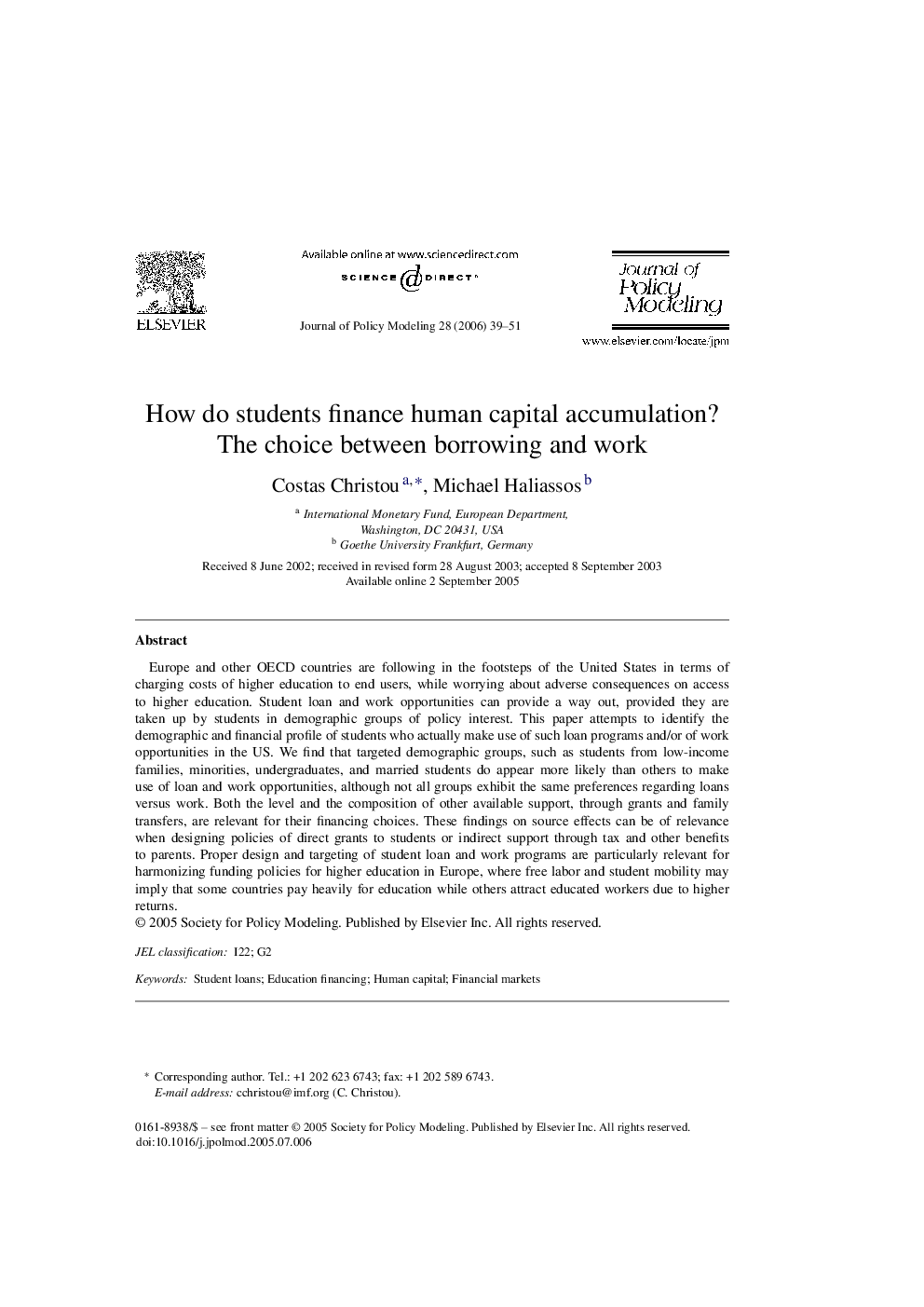| کد مقاله | کد نشریه | سال انتشار | مقاله انگلیسی | نسخه تمام متن |
|---|---|---|---|---|
| 968442 | 931554 | 2006 | 13 صفحه PDF | دانلود رایگان |

Europe and other OECD countries are following in the footsteps of the United States in terms of charging costs of higher education to end users, while worrying about adverse consequences on access to higher education. Student loan and work opportunities can provide a way out, provided they are taken up by students in demographic groups of policy interest. This paper attempts to identify the demographic and financial profile of students who actually make use of such loan programs and/or of work opportunities in the US. We find that targeted demographic groups, such as students from low-income families, minorities, undergraduates, and married students do appear more likely than others to make use of loan and work opportunities, although not all groups exhibit the same preferences regarding loans versus work. Both the level and the composition of other available support, through grants and family transfers, are relevant for their financing choices. These findings on source effects can be of relevance when designing policies of direct grants to students or indirect support through tax and other benefits to parents. Proper design and targeting of student loan and work programs are particularly relevant for harmonizing funding policies for higher education in Europe, where free labor and student mobility may imply that some countries pay heavily for education while others attract educated workers due to higher returns.
Journal: Journal of Policy Modeling - Volume 28, Issue 1, January 2006, Pages 39–51